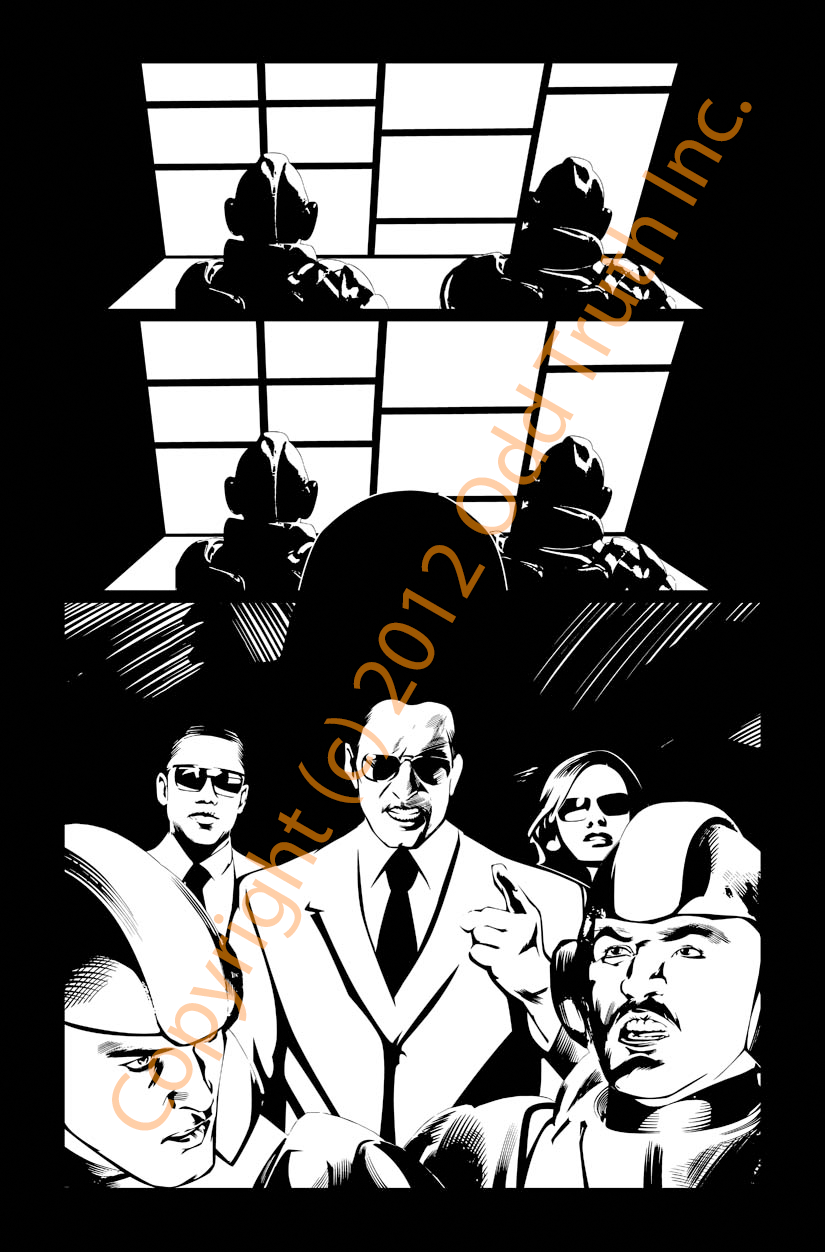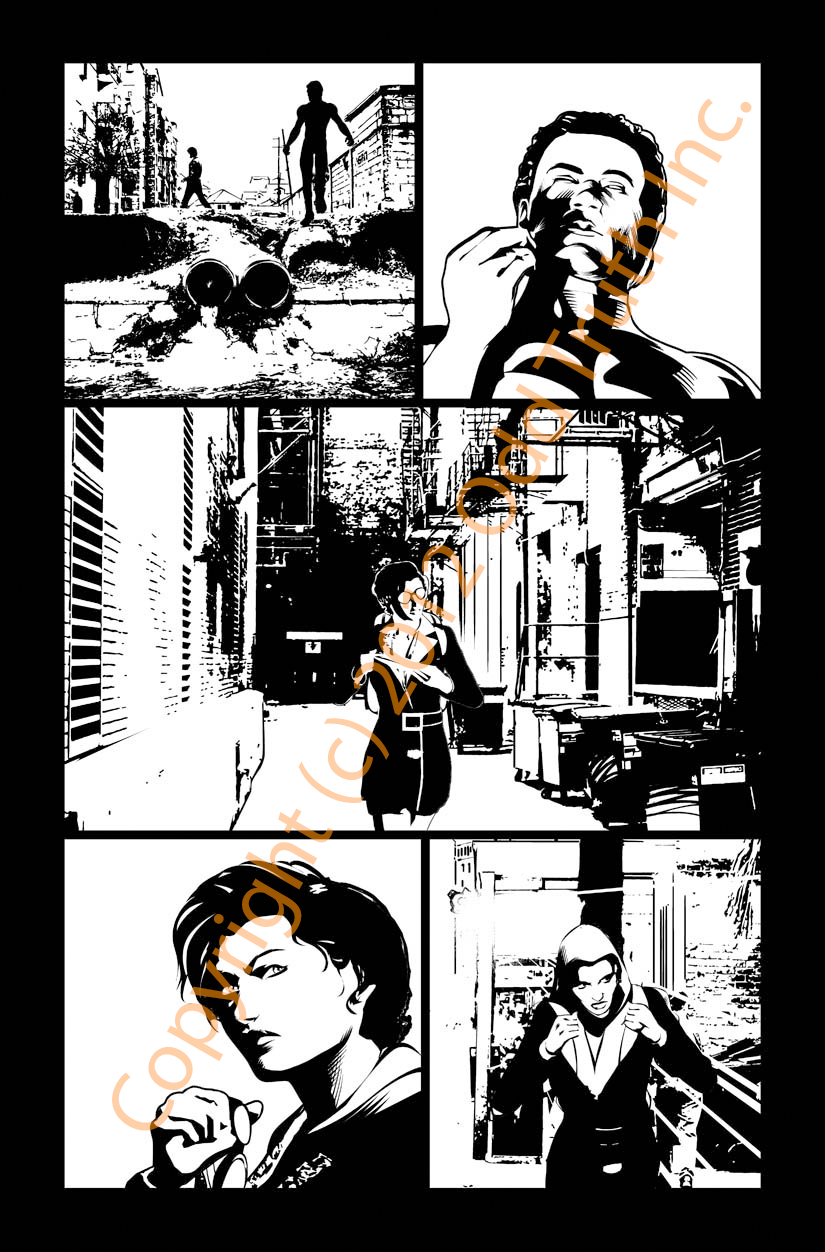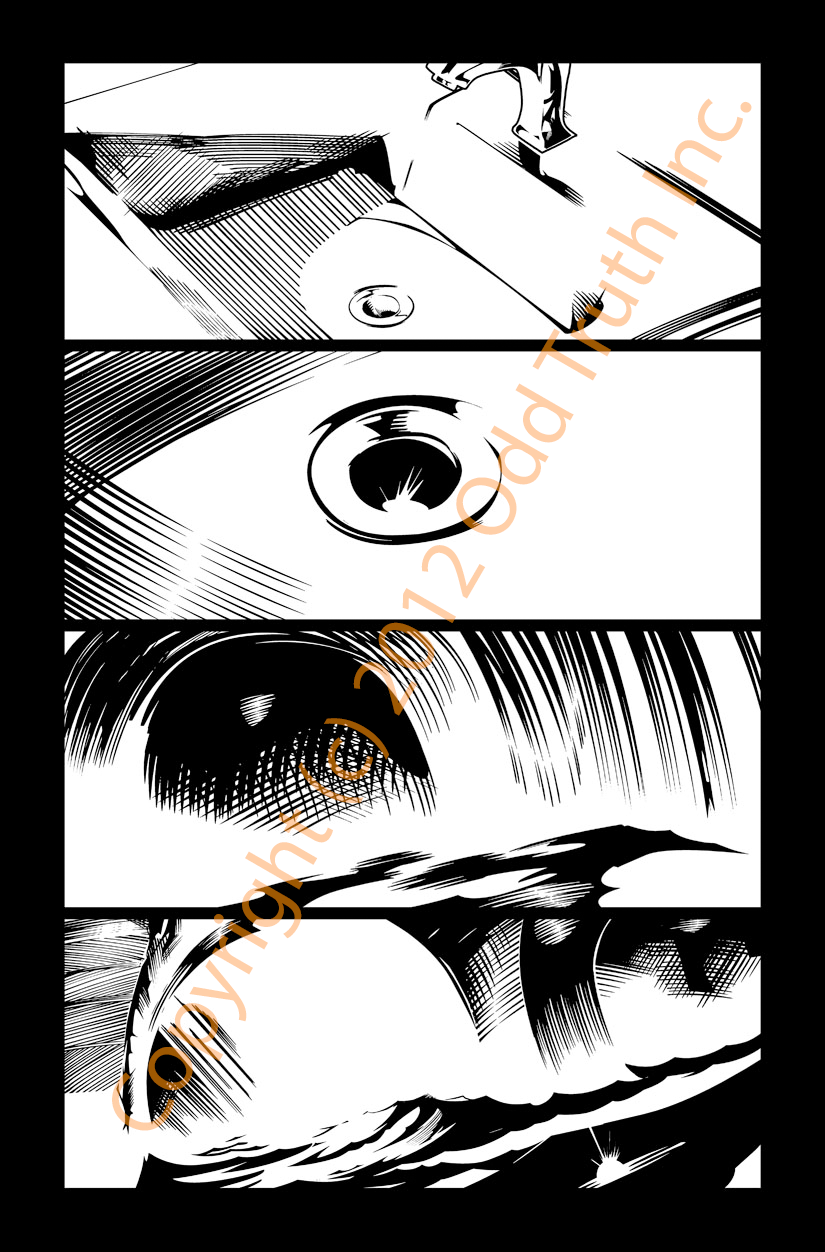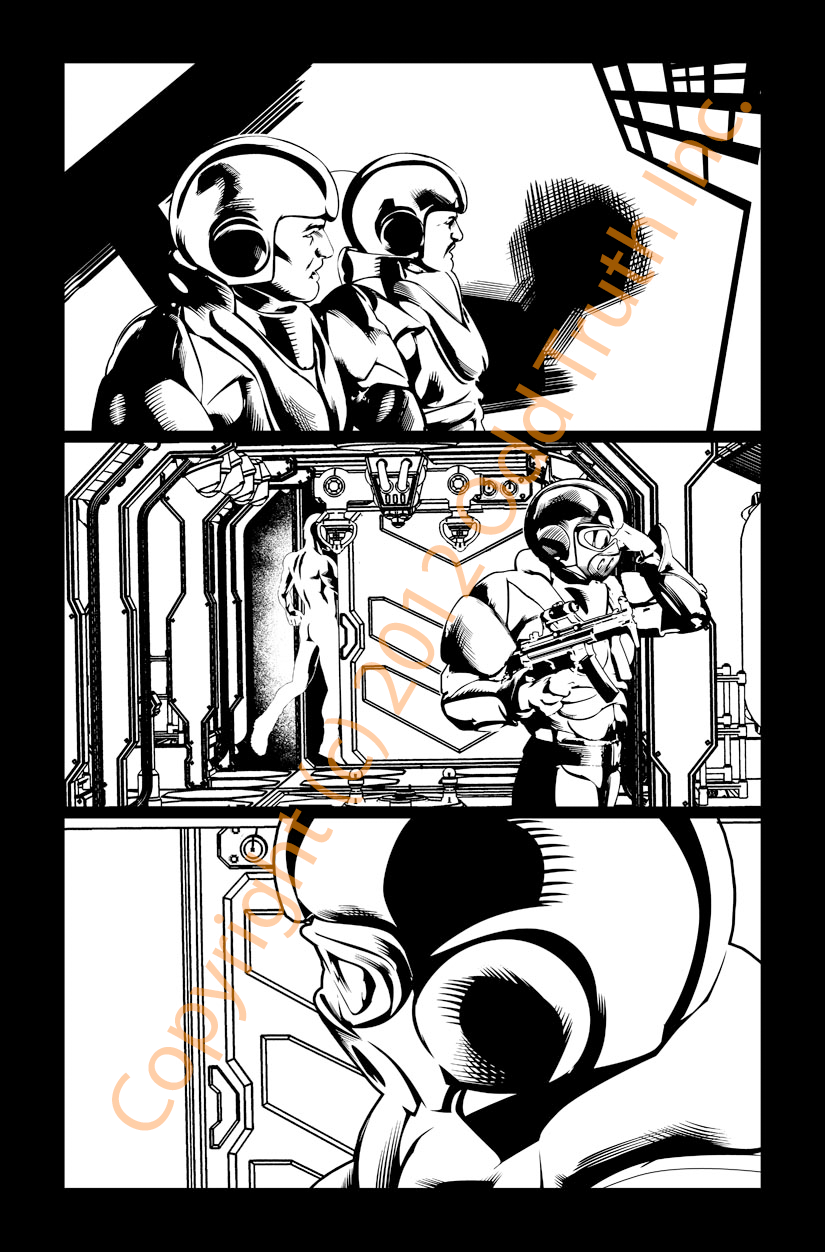Greetings everyone!
The inks for issue 2 have been submitted, and it’s being revised and colored as we speak. Here’s the latest batch of inks we can share. We think you all will love it.




Once these revisions and inks are done, the issue will be sent to the letterer and we will then submit it to the different online stores and start the print run. Unfortunately, once submitted to the stores it’s beyond our control when they go up. Typically, it’s taken:
– Red Stylo Bookstore: Same day.
– iBookstore: 1 week, give or take a few days
– Kindle: Over a week, but not more than two weeks.
– Graphicly: 3 days
– Drivethrucomics: Same day
– Nook: Still waiting on issue 1 to be approved. :-(The more I think about digital comics and distribution, and the different pros and cons associated with it, I can’t help but wonder whether we are really exploring what it means to have a digital comic book on a portable smart device (be it tablet or phone). For the most part, digital comics are right now glorified image readers that allow your comic book purchases to always be available to you with just the flick of your fingertips. And that’s great, but let’s not forget that these devices are smart, and could provide us with different storytelling avenues.
(For the following thought experiment, let’s ignore the logistics and realities of art, software and general production costs.)
Case in point, MadeFire. MadeFire is a great motion comic book app that is taking advantage of the multi-touch gesture controls, audio, animation and other rich environments available through our portable devices. The writing and artwork is phenomenal (Dave Gibbons, Bill Sienkiewicz, Brian Bolland and others are involved with MadeFire) and I enjoyed reading the stories and using the apps. I found ingenious how they used gestures to progress in the story, as well as other bits of multimedia that they used to tell an engaging story. (My suggestion: download “Treatment “)
But, are motion comic books really comic books?
See, we believe that some of the appeal of comic books lies in the fact that the panels are fixed. The artwork doesn’t move, it hints at motion and while we the creators show what happens between panels A and B, it’s up to you, the reader, to fill in the blanks. Does that mean that motion comics take some of that “burden of imagination” away from the reader? Perhaps, perhaps not.
Regardless of how one feels, the reality is that there’s an incredible amount of pressure for digital multimedia to behave more like video games. And it makes sense: because video games well-crafted video games are engaging. Do you know how many hours one spends playing “Call of Duty” or “The Legend of Zelda” or “Mass Effect”, on average?
It’s usually 20+ hours. When was the last time you read a comic book (or a paperback book), watched a movie, or listened to a song for that much time? There are numerous reasons why video games have such a long period of engagement. One of them is that video games allow us, for the most part, to explore at our own pace, and we can see that the world doesn’t really end just because we left the obvious path. And that ability to explore is one of the reasons we can immerse ourselves in someone else’s creation.
One of the ways we can (and a lot of the successful media product out there do) address the issue of engagement is by just providing an incredibly rich, detailed and complex environment to explore, on top of a compelling story and interesting characters (which should always be the priority of any creative team). That’s one of the reasons why people watch time and again movies like “The Avengers” or “The Dark Knight Rises” or even “Titanic”. It’s all in the details and the little hints dropped to the audience that makes us want to watch it again and again. And it’s these details that we share with other fans, which in turn exposes us to other ideas or hints or clues that we didn’t see before, encouraging us to re-watch it again.
Here’s where I think digital comics do provide an incentive that print comics do not. They’re in a digital environment, allowing for easy exploration and additional content to those looking for it. I keep going back to Scott McCloud’s Infinite Canvas concept and thinking that it’s a great way to provide for more content, or even alternate storylines, just a pinch or zoom away. Perhaps digital comics will evolve into a new type of comic book that is both a motion comic and a way of exploring this world we are creating for you. Perhaps it’ll be something else entirely.
All I know is that it’s a great time to experiment.
Thanks for listening.
Best,
Nick D.
PS. I haven’t mentioned it as much before, but we have a Facebook page and a Twitter account as well. We’d love to hear from you and your ideas!

